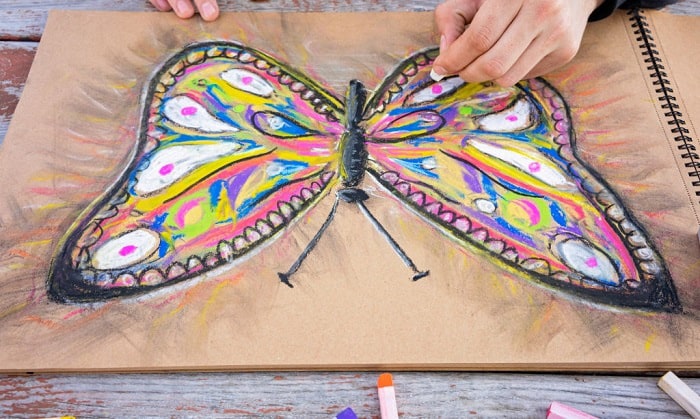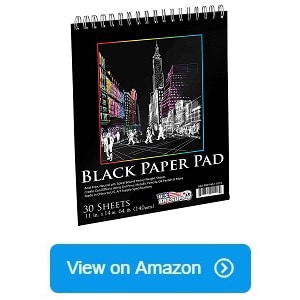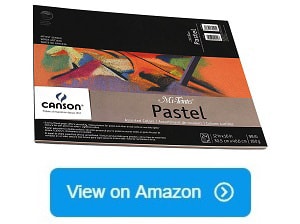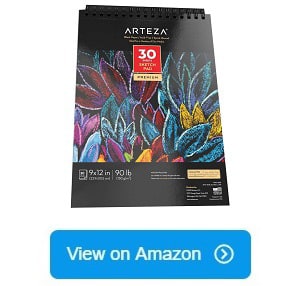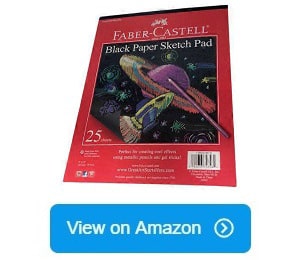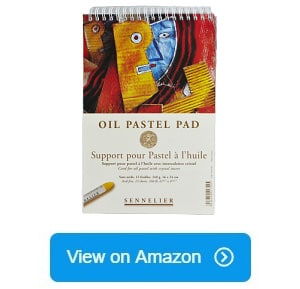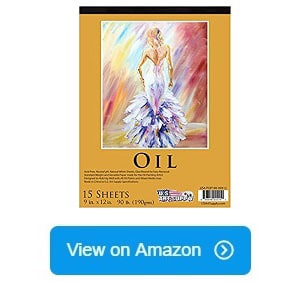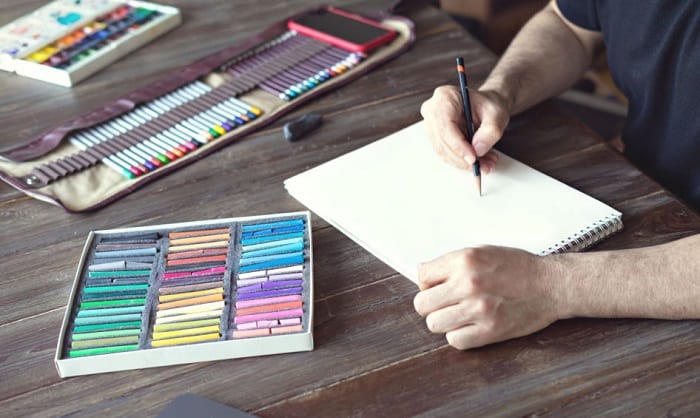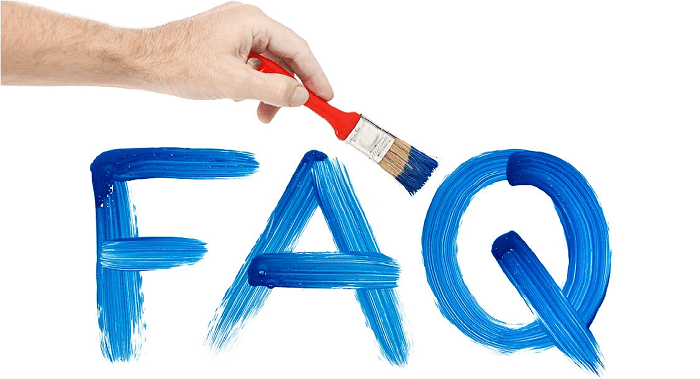Finding the best paper for oil pastels is considered to be a crucial factor if mentioned about drawing. When you browse on the options, you scan through the details and notice some terms like GSM (rule for weight) and LB (the thickness of paper). What do they mean? It depends, if you’re looking for a paper that’s versatile, thick, heavy, and bleed-proof, then you would need a higher number on those terms.
As outlined, oil pastels are not your ordinary crayons that can efficiently work with regular papers. You want the kind of paper that will showcase your skill, techniques, and the beauty of your artwork. But which types of papers should you go for? What are the significant factors you should consider first? To help you out, we’ll walk you through our in-depth buying guide and roundup for the best kinds of papers for oil pastels.
Table of Contents
- Top 10 Paper for Oil Pastels Reviews
- 1. Strathmore 400 Series Pastel Pad
- 2. Canson XL Series Oil and Acrylic Paper Pad
- 3. CANSON Mi-Teintes Pastel Pad
- 4. U.S. Art Supply Black Heavyweight Paper
- 5. Northland Wholesale Premium SketchBook
- 6. Mi-Teintes Pastel Pad
- 7. ARTEZA 9X12” Black Sketch Pad
- 8. Faber-Castell Black Paper Pad
- 9. Sennelier Oil Pastel Card Pad
- 10. U.S. Art Supply Oil Painting Paper Pad
- What to Look for When Buying Paper for Oil Pastels
- Other Important Factors to Consider
- Frequently Asked Questions
- Conclusion
Top 10 Paper for Oil Pastels Reviews
1. Strathmore 400 Series Pastel Pad
The first thing I noticed about this pastel pad is the textured finish. Not only this feature offers seamless and easy application, but it also delivers a significant effect on the outcome of the colors. I can tell that the shades look more vibrant and true to their colors.
The paper surprisingly does the trick! As it makes blending oil pastels easier, especially when you want to enhance the colors, textures and various techniques.
Besides the texture, this Strathmore 400 Series pastel pad is heavy and has the ideal thickness to make sure the oil pastels won’t bleed through. At 80 lb weight, it is an impressive number for a paper for oil pastels.
You can also use soft pastels, hard pastels, and pastel pencils on this paper and exhibit your colorful artwork. Acrylic paints work on this, too. Plus, the paper is acid-free, allowing you to preserve the quality of your artwork. The colors won’t fade out or smudge over time.
Another attractive characteristic of this paper for oil pastels is the assortment of colors. Considering that some artists prefer plain white or black, these subtle tints give off a nice contrast to your oil pastels. Also, this 400 Series offers great quality for advanced artists. You can play with your oil pastels while showcasing the pigments against the paper’s subtle and soft colors.
- 80 lb
- Features a textured finish that holds up the colors very well
- Comes in a flip-over cover
- Assorted papers with subtle tints
- Easy for blending oil pastels
- Versatile and compatible with different art mediums
- The binding seems to be a bit flimsy
2. Canson XL Series Oil and Acrylic Paper Pad
Another favorite oil pastels paper on our list is the Canson XL Series Oil and Acrylic paper pad. It emphasizes a bleed-proof quality with a textured finish that will keep your oil pastels in their vibrant colors. I’m impressed with how well it holds up the oil pastels, even when you mix liquids with it. It won’t easily warp.
This oil pastel paper pad is also acid-free to make sure the pastels won’t smudge and wear out over time. But the highlight is the thickness and weight of 136 lb or 290 gsm, which shows an ideal quality that will keep oil pastels and even acrylics sturdy and fixed on the surface. It is somehow like a canvas but in a paper form.
It comes in a 9″x12″ size, which I guess is just the right size. But I like how the paper can be easily cut into smaller sizes if you want to make cards and hand them out to your friends and families.
Each paper comes in plain white color. It seems a basic and conventional surface to work on, but it still exhibits the colorful shades of the oil pastels. Plus, it includes 24 sheets to create more oil pastel paintings! And to keep all your beautiful artworks in place, this pastel pad is glue-bound so that you can just flip the cover to switch between the sheets.
- 136lb or 290 gsm
- Relatively thicker and heavier compared to other papers for oil pastels
- Specially designed for oil pastels and acrylic paints
- Acid-free to preserve the quality of the artwork
- Bleed-proof paper with a textured finish
- Holds up liquids very well
- Some of the pages fall apart at times
3. CANSON Mi-Teintes Pastel Pad
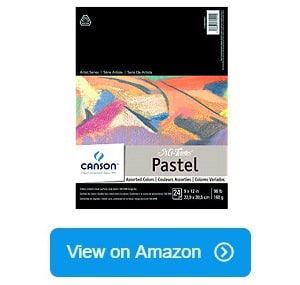
I like how versatile this paper is, especially if you want to work with different art mediums. While both textures work great with oil pastels, you can use pastel pencils on the smoother or lighter surface and oil or hard pastels on the other side. It is impressive how the paper grabs the color and holds it up well to preserve the quality and vividness of different shades.
Moreover, the versatile surface of the paper allows blending and layering seamless color. If you’re up for various oil pastel techniques, the dual textures will make it work. I find it pretty impressive how you can easily build the shades and depths since this is a common problem on some oil pastel papers. This brand knocks it out of the park.
Moreover, you’ll find the quality sturdy and the 98-pound or 160gsm would be just right to keep the colors of your oil pastels from bleeding through.
Another fascinating feature is the assortment of colors. Personally, I prefer white canvas or surface to showcase the blending and layering of oil pastels, but I’m also a fan of assorted colors. The variation of colors gives off a nice undertone for your oil pastels, allowing you to enhance your work details.
- 98 lb or 160 gsm
- Features dual surfaces for versatile textures – heavy and light textures
- Available in assorted colors for multiple undertones
- Works great with oil pastels
- Easy to build and layer different oil pastel shades
- Bleed-proof quality
- A little bit expensive
4. U.S. Art Supply Black Heavyweight Paper
A black sheet could be your ideal pick if you often play with flashy shades and striking colors. If so, this heavyweight, premium black paper from US Art Supply might just be the perfect surface to exhibit your artwork.
This 64-pound (140gsm) black paper features a decent thickness that holds the oil pastels pretty well. I also like the texture that isn’t too smooth nor too rough. It lends a nice and light texture that lets your oil pastels glide through.
It has a black undertone, so you can produce dramatic and artistic effects to highlight the details of your work. You can also build and layer colors to achieve your desired tone against the black surface.
Its versatility truly is impressive. It doesn’t have that flimsy feel when you hold it. It is a thick heavy paper that you can use not only for oil pastels but also for different art mediums. And if you want to use metallic pens, white markers, or gel pens to add some intricate details or lines, the effects and combination of colors would be a total shimmering feast in your eyes!
Contrary to other paper pads on this list, I think this can provide better binding as this item comes in a spiral bound. It won’t fall apart as much as it would with a glue-bound paper pad.
However, this may not always be the case and the durability may still vary from brand to brand. But this spiral bound can keep all your work together and you can easily shift to another page for a new artwork. This also makes it a great pad for sketching and doodling.
It is also available in two different sizes. But if you prefer a larger surface, you can go with 11″x14″. You’ll also have enough with 30 sheets. Plus, it is acid-free and the colors won’t fade or smear over time.
- 64 lb or 134 gsm
- Features a black paper pad in spiral bound
- Lends light texture for easy and smooth coloring and sketching
- Acid-free to preserve the quality and colors of your artwork
- Heavy and thick
- It can be used with different art mediums
- The perforated edges could be an issue if you put your work for display
5. Northland Wholesale Premium SketchBook
This Premium Sketchbook might be the missing piece in your art arsenal for a smooth and versatile paper that you can use with different art mediums. The color of the paper comes in an off-white shade that gives off a very subtle undertone.
Such tone also showcases the vividness of the oil pastels when you layer the colors or build them according to your preferred shades. I find the paper color somehow elegant and prim that nothing like the usual super white bond paper color.
In terms of versatility, this sketch book accommodates different types of art mediums besides oil pastels. Just in case you want to incorporate other mediums such as pencils, charcoal, crayon, and other types of pastels, you may do so.
The manufacturer emphasizes the light textured finish of this paper that feels smooth as you work your pastels on it. It isn’t as heavy and thick as the other papers on our list, but it still offers a premium quality surface for oil pastels.
Another advantage of a lightly textured paper is the vibrancy of colors. As it provides a smooth layout, I find that the colors look highly pigmented. Building and layering the colors won’t also be a problem. Therefore, it is ideal for sketching and drawing.
- Lightly textured versatile paper
- Features off-white pages for subtle and sophisticated undertone
- Ideal for sketching and drawing
- Premium quality paper for beginners
- It can be used with oil pastels, charcoal, crayon, and pencils
- Flip-over cover for hassle-free page switching
- May not be ideal for those who prefer heavy textures
- Blending oil pastels seem to crumble at times
6. Mi-Teintes Pastel Pad
If you fancy landscape formats, you’d probably adore this Mi-Teintes Pastel Pad. It is a fold over sketchbook that feels like opening the pages of a book. Also, this format is great for framing if ever you want to.
Besides this aesthetic format, the dual textures are also a true winner. You’ll have heavy texture on one side and a lighter texture on the other. It is nice to have options when you’re trying to create a masterpiece. And as for me, having both textures in one sheet is an ultimate steal.
The colors of the oil pastels work great with these surfaces. I am pretty impressed with how well these cotton and gelatin-sized papers exhibit the vibrancy of colors. It does justice to the beautiful shades of oil pastels, whether you’re working on different tones.
And yes, this paper pad includes 24 sheets in assorted colors together with plain white shades. These assorted colors aren’t flashy for sure, but rather subtle earth tones that you can blend your oil pastels with.
With its 98-pound or 160 gsm rating, I’d say it is pretty thick and heavy, and just right for oil pastels. It holds the colors pretty well and they won’t bleed through. It is definitely something that you would look for as you don’t want to let your artwork end up in chaos.
- 98 lb or 160 gsm
- Thick and heavy quality that holds oil pastels very well
- Landscape format
- Dual textures for versatile painting – heavy and light textures
- Fold-over cover for easy page shifting
- Comes in assorted subtle earth tones
- Bleed-proof
- Some of the pages fall apart
7. ARTEZA 9X12” Black Sketch Pad
Just by looking at it, you can tell that this Arteza sketch pad has a sturdy spiral binding that keeps the pages intact. As each page is micro-perforated, you can easily rip the page off without tearing the paper apart.
It is also true to its size. Therefore, this brand is another worthy option if you don’t fancy non-spiral bound sketchbooks.
While the sturdy binding is an advantage, the true star of this sketchbook is the charcoal black paper. Contrary to the conventional white background, this black sheet lends a stunning contrast to your bright and vivid oil pastels. The colors seemingly become more vibrant as you build and layer them.
The paper allows you to achieve your desired depth and level of shades. Other than that, the 90-pound rating renders a great thickness that keeps the oil pastels intact. Plus, the paper is acid-free. Hence, they won’t smear or smudge. You can see that the colors look refined and in a careful layout.
This sketch pad is ideal for dry media. Apart from oil pastels, you can also use colored pencils, charcoal, gel pens, chalk, graphite pencils, and many other dry art mediums. It is versatile and the colors of every dry art medium will pop beautifully.
- 90 lb or 150 gsm
- Includes black oil pastel papers for a stunning contrast
- Thick and bleed-proof
- Ideal for different types of dry art mediums
- Sturdy spiral binding
- Holds oil pastels very well
- The paper has a little bit of unpleasant chemical smell
8. Faber-Castell Black Paper Pad
Faber-Castell has been a pioneer in the immense field of art mediums and art products, making them counted on for excellent quality. Their lineup of sketch pads for oil pastels is fascinating and this black paper sketch pad truly is a special treat!
I have believed white oil pastel paper makes an excellent surface to showcase the vividness and true colors of oil pastels. But this product proves that black papers can also give off a different kind of pop of colors.
This sketch pad has enough texture to enhance the details of the oil pastels. Layering and building the colors are no trouble. It accommodates oil pastels very well and you can see their playful shades, especially the whites.
I was amazed by how great it can create cool effects against the black backdrop while keeping the oil pastels true to their shades. The paper is fairly smooth and allows oil pastels to produce shadows, highlights, different levels of depths, and light sources. The item is also acid-free and hence, preserves the quality and vibrancy of the oil pastels.
This paper pad for oil pastels is heavy, thick, and bleed-proof. So if you feel like mixing other art mediums with your oil pastels, you can make them work with this black sketch pad. Whether pastel pencils, gel pens, metallic pens, chalk, charcoal, soft pastels, or any dry media. It also features a glue-bound flip-over cover that makes it much easier to move from one sheet to another.
- Heavyweight and bleed-proof black paper
- Keeps the shades and vibrancy of oil pastels
- Fairly smooth texture that enhances the details of oil pastels
- Acid-free paper that offers quality and color preservation
- Comes in a flip-over cover
- Some pages fall apart at times
9. Sennelier Oil Pastel Card Pad
This Sennelier Oil pastel paper is probably the only pastel pad I’ve seen that’s been specially designed for oil pastels. I find it a great advantage, especially if it becomes difficult for you to decide which paper is suitable for oil pastels.
There have been a lot of papers or sketch pads including the ones in our list, that are described compatible with different art mediums. But this pastel card pad is outstanding.
It is a heavyweight and thick paper at 160 pounds. It is bleed-proof and that makes it very suitable for oil pastels. You won’t have to worry about the smears and smudges or letting your work end in a total mess.
Like some other paper pads, it also attaches with a sturdy spiral bound to keep the sheets intact. Furthermore, the pages come in an off-white color, which adds a sophisticated touch to your artwork.
When it comes to the texture, I can say it is lightly textured but mostly, it is smooth. With such a covering, I can tell that the oil pastels have a smoother finish. The pastels glide on seamlessly without leaving any messy crumbles. It somehow leaves softness to your artwork when compared to canvas.
What I also like about this pastel pad is its exceptional compatibility with oil pastels. There are no blending issues and layering the colors go on quite smoothly. You can blend the colors and achieve your desired shades and depths of colors.
But probably the best thing about this pastel pad are the inserts on every page. We know that oil pastels tend to transfer on another sheet or page, leaving the other paper messed up with crumbles, smudges, and color transfers.
- Specially designed for oil pastels
- Heavyweight and thick paper at 160 pounds
- Makes blending and layering colors easy
- It has inserts on every page to prevent color transferring
- Bleed-proof and sturdy quality
- Has a light texture that gives off smooth application
- A little bit expensive
10. U.S. Art Supply Oil Painting Paper Pad
If you’re looking for a very textured paper for your oil pastels, you’ll find your luck with this pastel paper from US Art Supply.
As you look at the paper closely, there are some tiny patterns or ridges on the paper, but surprisingly fairly smooth when you touch it. This makes it a suitable surface for your oil pastels, especially if you’re trying to achieve impasto effects.
This paper allows you to create artistic and dramatic effects with your oil pastels without leaving residues or crumbles. This paper is a reliable surface for oil paints and other types of media due to its ability to hold up the colors very well.
Moreover, the sheets come in off-white. This adds an elegant touch to your artwork while allowing the vividness of the oil pastels to come out.
This sketch book comes in 15 sheets, which I also find a decent amount for its size and price. It implies a standard weight for oil pastels as it weighs 90 pounds or 190 gsm.
I like that the colors won’t bleed through this paper. It resembles a canvas, though, because of its thickness. Beginners and professional artists can take delight in its quality.
Apart from its sturdy quality and versatility, I also like the glue-bound design for hassle-free removal and switching of pages. If you want to put your artwork on display or hand it out to someone, you can just remove it from the pad seamlessly.
- 90 lb or 190 gsm
- Features a heavy texture for producing various oil pastel effects
- Suitable for oil pastels and various art mediums
- Bleed-proof and sturdy quality
- Glue-bound cover and hassle-free removal
- Has a heavily textured finish which may not be an ideal pick for those who prefer light textures
What to Look for When Buying Paper for Oil Pastels
Art Medium Compatibility
If you’re wondering what paper to use for oil pastels, one of the important factors to consider is whether the paper is compatible with your art medium such as oil pastels. There is a vast lineup of paper pads or sketchbooks on the market that offer sturdy quality and versatile surfaces. Some are specially designed for oil pastels, while some papers offer compatibility with different types of art mediums.
There are a lot of available sketch pads but be careful not to oversee the labels. You may find papers that are suitable for acrylic paint and oil paint but not recommended for oil pastels. However, this may not always be the case and many papers that you can find are compatible with different types of mediums. You’d be lucky to find a paper for oil pastel that provides standard quality, thickness, and weight.
Paper Weight and Thickness
The primary factors that will define the quality of the paper are the thickness and weight of the paper. You have probably seen these details on the labels as pounds or LB or grams per square meter or GSM. Do know that weight and thickness are correlated to each other. Therefore, the heavier the paper is, the thicker and stiffer it will be. But, what is the ideal weight or GSM for oil pastels?
The typical weight of paper usually ranges from 80 GSM to 200 GSM. However, this may go lower or higher, depending on the brand of paper. That’s why I often look for heavyweight papers and as a personal preference, I think the higher the paperweight or GSM, the better. It is also more durable and hence, resists tearing. I usually choose from 160 GSM to 300 GSM.
Such thickness also makes the paper bleedproof, no smudges, smears, or color transfers. It would be nice not to worry about messy prints and colors that could get through the paper. And if you’re all up for the highest GSM or the heaviest paper for your oil pastels, that could be around 350 to 450 GSM. That is a cardstock – thicker than a paper but thinner than cardboard or paperboard.
This is why regular papers aren’t really the best option for oil pastels. They are typically lighter and thinner. When you use oil pastels with a regular paper, it has the tendency to warp, smear, or just tear apart. Blending and layering colors can be an issue. I do agree that it would be difficult to showcase the vividness and brightness of your oil pastels with a regular paper. It’ll be a waste of time, effort, and oil pastels.
Texture
The texture of the paper makes a huge difference in your work. There are oil pastel papers that have light textures while some feature heavy textures. Both types have their advantages but it is all up to your preferences which you consider the best.
Those papers that are lightly textured typically feel fairly smooth when you touch it. Many artists prefer light textures to let the oil pastels glide on smooth and seamlessly on the surface. Compared to a heavy textured paper, there are a little to no messy crumbles.
It also somehow adds softness to the texture of the artwork. It holds the oil pastels and keeps their colors very well. Building the oil pastels and blending them doesn’t seem to be a problem, although some artists thought otherwise. However, the effects may still vary from brand to brand.
On the other hand, papers with heavy textures lend a rougher surface that prevents the oil pastels from smudging or smearing. This texture accommodates oil pastels quite nicely and allows them to produce cool effects and techniques, such as impasto. It also works best with different types of mediums, especially acrylic paints, water color, or other liquids.
Blending and layering the oil pastels don’t seem to be a hassle. But I notice that there are bits of crumbled pastels or residues when blending the oil pastels. But then again, this may not always be the case. It may still vary according to the brand of paper or the quality of pastels.
Size & Color
Just like many regular papers, these oil pastel papers are also available in different sizes, although the standard size is 9”x12”. But you may also purchase them at a larger or smaller size and choose whichever you prefer. Furthermore, some paper pads or sketch books vary in formats wherein you can pick between landscape and portrait formats.
With regards to the color, basic and plain white is what usually comes to mind. But these oil pastel papers may also be available in assorted colors. They usually come in neutrals, earth tones, grays, and other subtle tones. These shades give off a nice contrast on your oil pastels and hence, show different depths and combinations of the colors.
Off-white is another option to try, although many sketchbooks or paper pads do have this kind of white and not the super white. Many opt for this shade as it gives off a sophisticated and traditional vibe to the artwork. Some artists, on the other hand, go for charcoal black. Although some may find it challenging to work on such a dark backdrop, many artists still love the exquisite contrast against their pastels. All because of the cool effects it can deliver.
If you often mix mediums, black papers also work great with metallic colors, gel pens, and other vibrant colors. It may be a dark undertone but it does the trick to accentuate the vividness of oil pastels, effects of light sources, and highlighting details. High-quality black papers also provide a reliable surface for blending and layering colors.
Personal Preferences and Needs
It all comes down to your personal preferences and needs when choosing the best paper for your oil pastels. While the thickness, weight, and durability are the primary factors when making your options, you still have to determine which type of paper best fits your needs, skills, and techniques.
Do you prefer light textures or heavy textures? Do you often use your oil pastels with other types of art mediums? What effects, depths, and shades of colors do you want to achieve? Do you want to stick with the traditional white or off-white backdrop or you prefer assorted subtle undertones? How do you like the binding, glue-bound or spiral bound?
While these questions may help you decide which type of paper you should go for, there are probably other factors you can take note of such as the brand, size, or format. You may also identify your skills and which oil pastel techniques you commonly use.
Price Range
The price range is also another factor to think about. These oil pastel papers aren’t usually available for purchase by a single piece. Just like the ones on our list, they are typically available as sketchbooks or paper pads. Therefore, the price tags may also vary based on the brand, quality, and number of sheets.
Fortunately, these oil pastel papers don’t usually come at expensive price tags. You can purchase them around $20 and below. Some brands offer great quality at a more affordable price which is between $10 to $15. Some popular brands, however, can cost more than $20 but ensures excellent quality and optimum compatibility with oil pastels.
The price can be a significant factor to consider, especially if you are a beginner and have just been trying out different surfaces. You can go with the affordable options, although it is still up to you which brand and quality you are more comfortable with. But regardless of the price, you should always prioritize the quality. Otherwise, substandard papers can cost you more than you should in the long run.
Other Important Factors to Consider
What are the top-rated oil pastels papers?
It is actually hard to tell which oil pastel papers are the best. There are a lot of brands on the market that offer high-quality papers for your artwork and skills in oil pastel painting. But if the paper is sturdy and has the standard weight and thickness, it’s safe to say that it is the best or rather ideal oil pastel paper.
At the end of the day, you’ll be the one to decide which oil pastel papers work well with your oil pastels and other art mediums. As long as the paper or sketchbook suits your needs and preferences, you can probably consider it the best option.
How do they work?
It works like any regular paper, only this is thicker and heavier. You will also notice that each type has a designated GSM rating that determines the paper’s weight and thickness. With such sturdy quality, the paper can hold oil pastels well and keep their colors bright and vibrant at all times. Some are derived from recycled materials, which is a good thing as it reduces waste in the environment.
Actually, there aren’t any complicated steps to follow when using it. If you want your paper to work the way it should, you have to make sure that the surface is clean with no dirt, dust, and other residues. If you want to keep your artwork neat and smooth, you may also check if there are any creases on the paper. Creases or folds on thicker sheets are usually noticeable and don’t look very pleasant unless you want to remedy the flaws and improvise some kind of art or drawing with it. Once the surface is clean, you can start with your oil pastels.
Who is this for?
Whether you are an aspiring artist or a professional artist who has been working a lot with oil pastels, these oil pastel papers are for you. But it isn’t limited to such a group of people. Art teachers, students and everyone who loves art no matter what their ages are, they can still show off their skills and techniques with this type of paper.
What kind of paper do you use for oil pastels?
It should be the kind that is thick, heavy, and durable. This kind of quality ensures a compatible surface for oil pastels, thereby preventing any color bleeding, transfers, smudges, and smears. While there are different types of papers and sketchbooks that you can use, you have to make sure it has the ideal weight or thickness. And that typically indicates via GSM (grams per square meter).
You can consider the papers that range between 80 to 200. They have great thickness and weight that will work great with oil pastels. On the other hand, some can be around 300 to 400 GSM, which is also a good option to consider if you need something thicker and heavier like a card stock. A lot of available papers are applicable for many different types of art mediums, you’d be lucky to find a special type of paper solely designed for oil pastels such as the Sennelier oil pastel pad on our list.
Why do you need oil pastels paper?
You need oil pastels paper because regular or normal papers won’t work well. These oil pastel papers feature a specific design that is compatible with oil pastels and with other types of art mediums as well. Therefore, they need to have a sturdy quality, standard thickness and weight suitable for you to rely on to showcase your skills and techniques. If you keep on working with normal papers that are typically thin and weightless, you will be wasting a lot of oil pastels and you’ll probably end up with more mess than you think.
Frequently Asked Questions
What are the most trusted brands of oil pastel paper?
There is a vast array of brands for oil pastel papers you can consider. The brands mentioned on the list such as Faber-Castell, Strathmore, Sennelier, U.S Art Supply, Mi-Teintes, and Canson are some of the popular picks on the market. They offer a great lineup of quality papers that are compatible with different art mediums including oil pastels. Some of these brands, however, offer quality papers that are specifically designed for oil pastels.
You may start with these popular brands if you are an aspiring artist and still working on your skills and finding the most trusted art materials and mediums. However, it won’t hurt to try other brands as long as they have durable quality and ideal thickness and weight.
How to use oil pastels on paper?
You may think of it as like using regular crayons. It may seem like it but if you’re a beginner, you can start with the basic blending and layering techniques. Here are some pointers you can take note of:
- Prepare your oil pastel paper. Make sure it has no bumps, creases, dirt, and dust. Its surface should be neat and free of any damages.
- After prepping the paper, choose your preferred color of oil pastel.
- Apply the pastel on the paper. Oil pastels are very vibrant and sometimes, a little goes a long way. Therefore, you can apply little by little until you achieve your desired shade.
- If you want to blend the colors, you can add another color on top of it. Slowly and gently apply the color and blend it until you achieve the shade and depth that you want.
- Another important note is the proper handling of oil pastels. They don’t work like regular crayons. You can use the edge or tip of the pastel to create intricate details. But if you need to cover larger spaces and add layers and depths of colors, you should handle the oil pastel as if you’re picking it up.
- If you are using a paper with a heavy texture, you might need to build the colors more to achieve the vibrancy that you like. Heavily textured papers typically have patterns and fairly rough surfaces. It is great for producing dramatic effects and textures, though. But if you need more depth and more vibrant shade, you may need to use more oil pastels.
Can you use normal paper for oil pastels?
While some try to make their oil pastels work on a normal paper, it is not the ideal and recommended option. Normal papers are usually thinner and lighter. They are not bleed-proof. Oil pastels tend to smudge, smear, and bleed through this kind of paper due to their oil content. The paper will just absorb the pastels and your work will likely be in total chaos. That’s why oil pastels require a surface that is thicker or heavier to prevent color bleeding and transfers.
How do you blend oil pastels on paper?
In case you want to show off your oil pastel techniques through layering and blending, just starting with your preferred color. Apply a generous amount of oil pastel on the paper and choose another color that you want to mix with. Gently add the color on top of it. Keep on applying it and blending the color until you achieve your desired depth and shade. You may use your finger or a smudging tool to create more effects while enhancing the combination of colors.
Where to buy paper for oil pastels?
You can purchase them in almost every art shop or book store. They are pretty much accessible. You may even find collections of oil pastel paper in Walmart or Michaels or any local art store. But if it is not possible for you to check any of these physical stores, you can always shop without any hassle through online platforms and e-commerce websites such as Amazon and eBay.
You can browse a vast lineup of papers for oil pastels. If you want to sort them by brand, price, or keywords, you may do so. It is easy and very convenient. You can also find seasonal deals and discounts now and then. The customer reviews will also give you an overview of the quality and performance of the product. In this way, you can easily decide which type of paper is a worthwhile purchase.
How to care for oil pastel papers?
You’d be happy to know that these papers do not require high maintenance. But to preserve their quality, it would be wise to put them away in a secure and organized storage. In this way, you can prevent any damages, folds, and creases that would just ruin your work eventually.
If you are using spiral or non-spiral bound sketchbooks or paper pads, you can consider using inserts like wax papers to prevent any smudges and color transfers on each page. You can put a wax paper on each page to preserve the quality of your artwork as well as the vibrancy of oil pastels. While you can purchase these inserts separately, some sketchbooks include them.
Conclusion
Whether you are a beginner or a professional artist, you can always find the best paper for oil pastels to showcase your skills and techniques. Just remember that when choosing a paper, always look for the key features: thickness or weight and durability. Settling for the ultimate pick won’t have to be difficult as long as you know your needs and preferences.
If you still can’t decide which paper to choose, the in-depth roundup and buying guide will unravel everything you need to know about oil pastel papers. Hope this helps!

I am a former art teacher, so it is evident to me the importance of art in educating the new generation. We also want to help parents who plan to teach their children and desire the best tools and tips for them.
